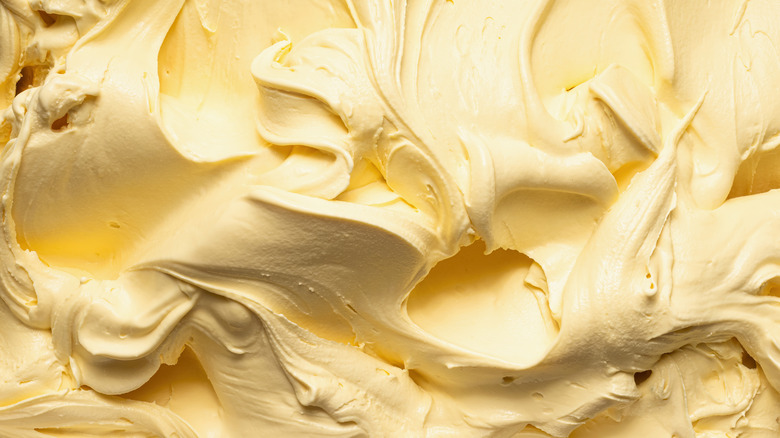The Origin Of Ice Cream Starts With Yogurt In China
Food history is a murky subject, where kernels of truth are often tangled up in myths. At the end of the day, there are very few dishes whose origins are firmly understood, and many of the origin stories you've heard are only partly true. Case in point, the history of the ice cream cone. It is popularly said that ice cream cones were invented at the St. Louis World's Fair in 1904, when an ice cream vendor teamed up with a neighboring wafer stand to create a novel handheld cup. However, French artwork from a century earlier depicts a woman licking what certainly seems to be an ice cream cone, and cookbooks throughout the 19th century feature similar conical treats.
If sorting fact from fiction can be so challenging for relatively recent inventions like the ice cream cone, you can imagine how much tougher things get when it comes to ancient creations. A perfect example is ice cream itself. Like the cone that would later accompany it, ice cream is the subject of many apocryphal tales, the most famous being that Marco Polo introduced the treat to Europeans following his travels in China. This claim, along with many details of Marco Polo's travels, has been the subject of much debate, but there is strong evidence to suggest that ice cream indeed has Chinese origins. But there's a surprise in the mix, as its earliest form was likely less akin to modern ice cream and a little closer to frozen yogurt.
Ice cream likely came from the Tang Dynasty
You might expect ice cream to be a fairly recent creation, impossible to accomplish until the invention of the freezer, but food-freezing technology is much older than you'd think. By 4,000 B.C., Mesopotamian nobles had ordered the construction of ice houses near the Euphrates River, where goods could be kept cold amidst the desert heat. In Ancient Rome, the Emperor Nero reportedly used enslaved people to harvest snow from the mountains, mixing it with honey and fruit pulp to make a frozen treat. However, this wasn't anywhere close to what we consider ice cream, as there was no dairy involved. The first step towards the creamy creation we know today came from Ancient China.
The first evidence of people enjoying a frozen dairy treat comes from China around 200 B.C. It was a mixture of milk and rice, which was packed into snow to freeze it. This would be a very rudimentary concept of ice cream, but it was further refined during the Tang Dynasty (A.D. 618-907). A mixture of milks from cows, goats, and buffalo would be heated and fermented, essentially making yogurt. This would then be mixed with flour and camphor (a strong-smelling derivative of tree bark) and frozen before serving. It is even said that a Tang emperor kept a staff of 94 ice men to ensure he always had some of the treat on hand.
How ice cream took over the world
Now let's get back to the tale of Marco Polo. Did he really introduce Europeans to ice cream after encountering its progenitor in China? We'll probably never know for sure. Many tales from these adventures, particularly the claim that Marco Polo introduced spaghetti to Italy after discovering it in China, have been disproved, and the same doubts apply to the ice cream theory as well. Some have even suggested that Marco Polo never went to China at all, though research published in Science Daily puts forth evidence that he did, and it is possible that he returned home with word of ice cream-like treats.
It is also possible that Marco Polo was introduced to an ice cream predecessor elsewhere on the Asian continent. Medieval Arabs enjoyed a frozen dessert called sharabt, whose name has long since entered English as "sherbet," while the members of the Mughal Empire made kulfi, a treat made from frozen condensed milk.
At any rate, ice cream's invasion of the Western world certainly seems to have begun in Marco Polo's native Italy. In the 17th century, the first written recipe for an ice cream-like dish was published by a Neapolitan chef named Antonio Latini. Things went a step further near the end of that century, when Sicilian Francesco Procopio dei Coltelli opened a cafe in Paris that served gelato. The establishment's famous patrons, which included Napoleon, Victor Hugo, and Benjamin Franklin, helped propel ice cream to the global stage.


